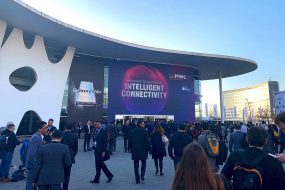
The ongoing technological rivalry between China and the United States has escalated into a significant conflict over high-bandwidth memory (HBM). This blog explores HBM, how it works, and why consumers should be concerned about the implications of this tech war.
What is High Bandwidth Memory?
High bandwidth memory (HBM) is a type of memory chip. It is designed to provide faster data transfer rates and greater bandwidth compared to traditional memory technologies. HBM is essential for high-performance computing applications, including artificial intelligence (AI), graphics processing, and data centres. It consists of multiple memory chips stacked vertically, allowing for increased data storage and quicker access speeds, which is crucial for demanding applications such as AI and machine learning.

How Does High-Bandwidth Memory Work?
HBM operates by stacking several memory chips on top of each other, connected through vertical interconnects. This design allows for a much larger data transfer rate compared to conventional memory. Here’s how it works:
- Stacked Architecture: HBM chips are like a multi-tiered cake, which reduces the distance data must travel, thus speeding up access times.
- Increased Bandwidth: The architecture allows for a higher number of data channels, significantly increasing the bandwidth. This is akin to having a multi-lane highway, where more vehicles can travel simultaneously without congestion.
- Efficiency: HBM consumes less power than traditional memory types, making it more efficient for high-performance applications. Which is particularly important in mobile and embedded systems.
The US-China High-Bandwidth Memory Conflict
The US government has implemented strict export controls on HBM technology to China, aiming to curb China’s advancements in AI and military capabilities. These restrictions are part of a broader strategy to maintain technological superiority and prevent China from accessing critical technologies that could enhance its military and economic power.

Impact on China
The US export restrictions are expected to slow down China’s development of advanced AI chips and HBM technology. While China is working to develop its own HBM capabilities, it currently lags behind major manufacturers like South Korea’s SK Hynix and Samsung, and America’s Micron Technology. This situation could lead to a temporary setback for China’s tech ambitions, but experts believe that China will eventually catch up, albeit with less advanced technology in the short term.
Should Consumers Be Concerned?
While the HBM conflict primarily affects manufacturers and tech companies, consumers may feel the impact in several ways:
- Increased Prices: As export restrictions limit the supply of advanced memory chips, prices for consumer electronics that rely on HBM, such as high-end graphics cards and AI-driven devices, may rise. This could lead to higher costs for consumers looking to purchase the latest technology.
- Slower Innovation: The ongoing tech war could slow down the pace of innovation in consumer electronics. If companies face challenges in sourcing advanced memory technologies, the development of new products and features may be delayed.
- Market Volatility: The geopolitical tensions between the US and China can lead to market instability. This affects stock prices and the availability of tech products. Consumers may experience fluctuations in product availability and pricing as companies navigate these challenges.
The war between China and the US is a critical aspect of the broader technological rivalry between the two nations. While the immediate effects may be more pronounced in the tech industry. Consumers should remain aware of potential price increases and slower innovation in the electronics market. As the situation evolves, staying informed about how these developments may impact their technology choices will be essential.
Read more on Lifetips.blog














